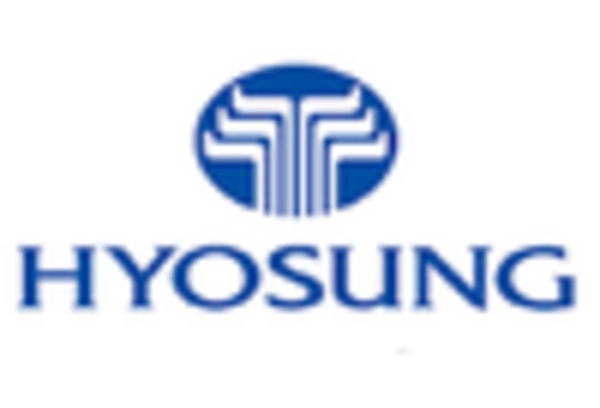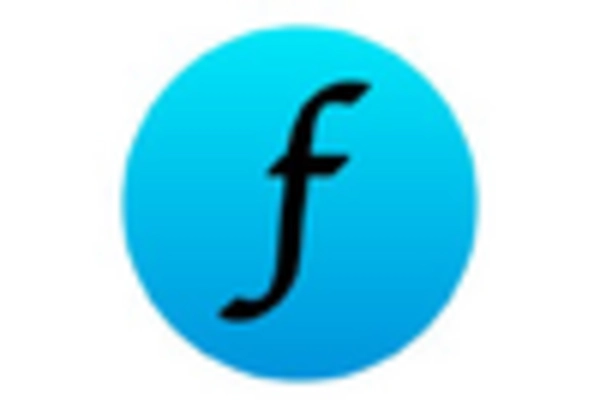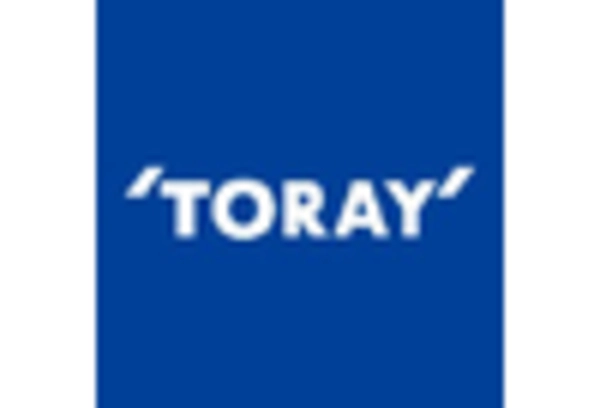Rising Demand for Performance Fabrics
The increasing demand for performance fabrics is a notable driver in the Synthetic Fabric Market. As consumers become more health-conscious and active, there is a growing preference for fabrics that offer moisture-wicking, breathability, and durability. This trend is particularly evident in the sports and outdoor apparel sectors, where synthetic fabrics are favored for their ability to enhance athletic performance. According to recent data, the performance apparel segment is projected to grow at a compound annual growth rate of approximately 6.5% over the next five years. This shift towards high-performance textiles is likely to propel the Synthetic Fabric Market, as manufacturers innovate to meet consumer expectations for functionality and comfort.
Growth of E-Commerce and Online Retail
The growth of e-commerce and online retail is a significant driver in the Synthetic Fabric Market. As consumers increasingly turn to online shopping for convenience and variety, the demand for synthetic fabrics is expected to rise. E-commerce platforms provide access to a broader range of products, allowing consumers to explore various synthetic fabric options from the comfort of their homes. This trend is particularly relevant in the fashion and home textiles sectors, where online sales are surging. Data indicates that online retail sales in the apparel segment are projected to grow at a rate of 10% annually. This shift towards digital shopping is likely to enhance the visibility and accessibility of synthetic fabrics, thereby contributing to the overall growth of the Synthetic Fabric Market.
Customization and Personalization Trends
The trend towards customization and personalization is significantly influencing the Synthetic Fabric Market. Consumers increasingly seek unique products that reflect their individual styles and preferences. This demand has prompted manufacturers to offer customizable options, allowing customers to select colors, patterns, and even fabric properties. The rise of e-commerce platforms has further facilitated this trend, enabling consumers to easily access personalized products. As a result, brands that embrace customization are likely to gain a competitive edge in the market. This shift towards tailored offerings not only enhances customer satisfaction but also drives sales growth within the Synthetic Fabric Market, as consumers are willing to pay a premium for personalized items.
Sustainability and Eco-Friendly Innovations
Sustainability has emerged as a pivotal driver in the Synthetic Fabric Market. With increasing awareness of environmental issues, consumers are gravitating towards eco-friendly synthetic fabrics made from recycled materials or produced through sustainable processes. Brands are responding by developing textiles that minimize environmental impact while maintaining quality and performance. For instance, the use of recycled polyester has gained traction, with a significant portion of the market now focusing on sustainable sourcing. This trend not only aligns with consumer values but also presents opportunities for companies to differentiate themselves in a competitive landscape. The shift towards sustainability is expected to influence purchasing decisions, thereby shaping the future of the Synthetic Fabric Market.
Technological Advancements in Fabric Production
Technological advancements play a crucial role in shaping the Synthetic Fabric Market. Innovations in textile manufacturing processes, such as 3D knitting and digital printing, are revolutionizing how synthetic fabrics are produced. These technologies enable manufacturers to create complex designs and patterns with greater efficiency and reduced waste. Furthermore, advancements in fiber technology, such as the development of smart textiles that can respond to environmental stimuli, are expanding the applications of synthetic fabrics beyond traditional uses. As these technologies continue to evolve, they are likely to enhance the appeal of synthetic fabrics, driving growth in the market. The integration of technology into fabric production is expected to create new opportunities for innovation and differentiation within the Synthetic Fabric Market.


















Leave a Comment